11.4
km / 7.1
miles
-
(22
minutes)
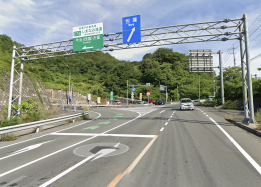
MapCode :
48 248 164*40
Website :
Description :
Beginning point at north entrance to the Shimanami Kaido in Onomichi, Hiroshima Prefecture. The highway is approximately 70 km / 44 mi long, ending in Imabari, Ehimi Prefecture on Shikoku Island. It is also called the Nishi-Seto Expressway. The route, opened in 1999, crosses six smaller islands between Honshu and Shikoku. There is also a separate foot and bike road totalling about 70 km (? mi). There is a total of about 5,000 yen in tolls to cross the complete highway.
Hours :
Open daily 24/7
Address :
1-1 Higashigoshochō, Onomichi, Hiroshima 722-0036
3.1
km / 1.9
miles
-
(3
minutes)


Min/Max Time :
5 / 10
Minutes
MapCode :
48 251 698*03
Phone :
078-291-1033
Description :
The Shin-Onomichio Bridge is a modern, divided highway bridge crossing from Onomichi City (on the island of Honshu) to Mukaishima Island (connecting to the island of Shikoku) in the Seto Inland Sea. It was opened in 1999, approximately 30 years after the nearby Onomichi bridge which was the first cable stayed bridge in Japan. The bridges are of similar, three-span design with a center span of 215 m (705 ft). Note that bicycle traffic is forbidden on this bridge as there is no separate sidewalk.
Hours :
Open daily 24/7
Address :
Mukaihigashicho, Onomichi, Hiroshima 722-0062, Japan
8.1
km / 5.0
miles
-
(13
minutes)


MapCode :
48 100 694*11
Phone :
084-838-9184
Hours :
Open daily 24/7
Address :
Mukaishimacho Tachibana, Onomichi, Hiroshima 722-0071
7.3
km / 4.5
miles
-
(12
minutes)
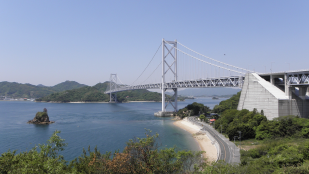
Min/Max Time :
5 / 10
Minutes
MapCode :
48 066 479*55
Description :
The Innoshima Bridge is a Japanese suspension bridge, part of the 59 km / 37 mi Nishiseto Expressway linking the islands of Honshu and Shikoku. Completed in 1983, it has a main span of 770 m / 2,526 ft and connects Mukaishima, Hiroshima with Innoshima, Hiroshima.
Courtesy of Wikipedia
Courtesy of Wikipedia
Hours :
Open daily 24/7
Address :
Onomichi, Hiroshima
7.3
km / 4.6
miles
-
(11
minutes)
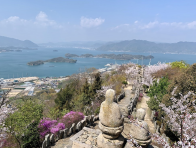
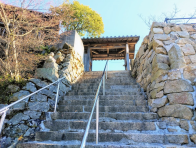
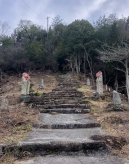
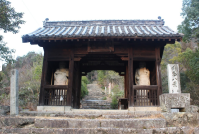

Min/Max Time :
10 / 20
Minutes
MapCode :
48 034 155*08
Description :
Park your car/bike here to walk up to the summit of Mt. Shirataki, about 5-10 minutes. Further up is a path lined with about 700 stone Buddha statues. Along the path are the the Rock of Love, the Shirataki Kannon Temple (built by the Murakami clan pirates), the Shirataki Mountain 500 Rakan, the Shirataki Mountain Observatory, and the Innoshima Shirataki Mountain Japanese Okojingi (greater and lesser gods). A public toilet is located short of the parking lot.
Hours :
Open daily 24/7
Address :
Innoshimashigeicho, Onomichi, Hiroshima 722-2102
5.6
km / 3.5
miles
-
(13
minutes)
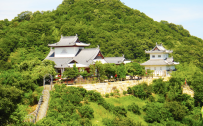

Min/Max Time :
10 / 20
Minutes
MapCode :
381 860 731*32
Phone :
084-524-0936
Description :
The original castle on Innoshima is believed to have been little more than a shelter from rough seas and bad weather. The current buildings comprising Innoshima Suigun Castle, constructed in 1983, are far more grandiose. But while the structure is contemporary, the artifacts held inside the castle's museum map out a long, rich history. Innoshima Suigun Castle was one of the bases of operation for a pirate organization, the Murakami Kaizoku, during the Warring States Period, around 500 years ago. They were a dominant naval force that existed outside the control of the local shogunate. At the castle and museum, you can learn about their long, bloody history and why many in the area feared them. The foot of the castle houses Konrenji Temple with pirate graves.
Courtesy of www.japan.travel
Courtesy of www.japan.travel
Hours :
Open daily 09:30 – 17:00; closed Thursdays
Address :
Innoshima-nakanosho-cho, Onomichi, Hiroshima 722-2211
2.5
km / 1.6
miles
-
(6
minutes)
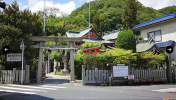
Min/Max Time :
10 / 20
Minutes
MapCode :
381 862 881*00
Phone :
084-524-3715
Website :
Description :
Innoshima is the birthplace of Honinbo Shusaku (1829-1862), a legendary go-player from the 19th century. The Honinbo Shusaku Igo Memorial Hall honors the man and the island hosts two Shusaku Honinbo Go Festivals every year.
Courtesy of www.japan-experience.com
Courtesy of www.japan-experience.com
Hours :
Open daily 10:00M – 17:00, closed Tuesdays
Address :
121-1 Innoshimatonourachō, Onomichi, Hiroshima 722-2213
7.0
km / 4.3
miles
-
(12
minutes)

Min/Max Time :
5 / 10
Minutes
MapCode :
381 798 038*17
Description :
The Ikuchi Bridge, connecting Innoshima Island with Ikuchi Island, was completed in 1991 as the fifth long-span bridge on Nishi-Seto Expressway. This bridge was the longest cable stayed bridge in the world when completed. The particular characteristic of the bridge is to have applied heavy concrete girders at the side spans of the bridge and light steel girders at the center span as so called composite structures. Various techniques applied to the Ikuchi Bridge were made use of in constructing the Tatara Bridge which is the second longest cable stayed bridge in the world.
Courtesy of Honshu-Shikoku Bridge Expressway Company Ltd.
Courtesy of Honshu-Shikoku Bridge Expressway Company Ltd.
Hours :
Open daily 24/7
Address :
Innoshimasunoecho, Onomichi, Hiroshima 722-0000
8.6
km / 5.4
miles
-
(14
minutes)





MapCode :
154 505 105*08
Phone :
084-523-7911
Website :
Address :
269 Setodachō Setoda, Onomichi, Hiroshima 722-2411